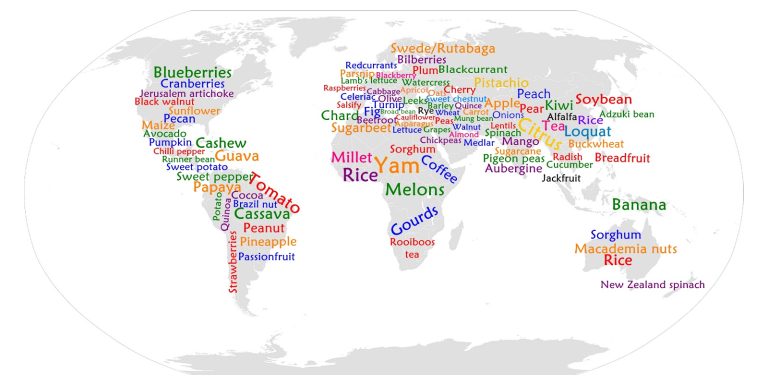Surprise yourself in the garden with self-seeding plants.
By Diana Sette
The following article was originally published in Permaculture Design Magazine’s Issue #102 Plants & Propagation. November 2016.
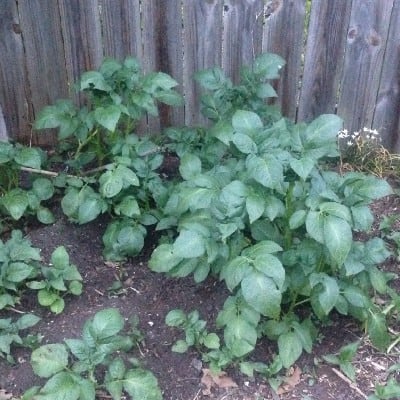
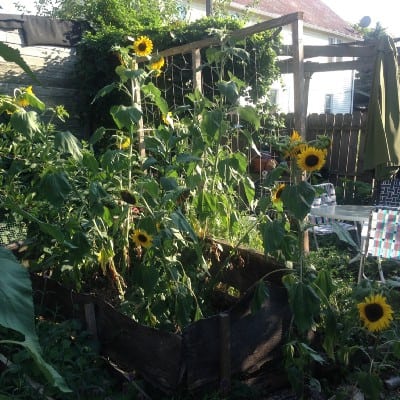
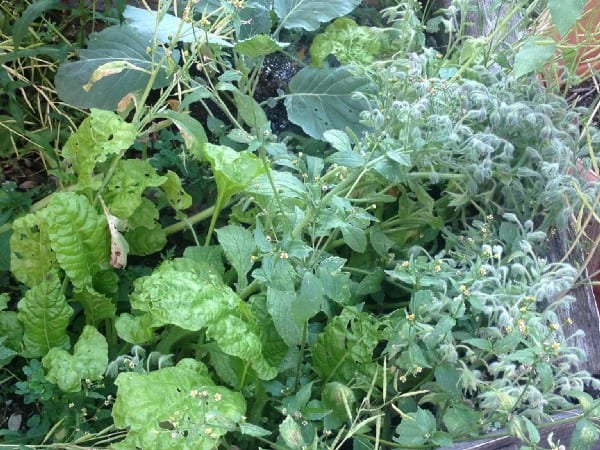
There is nothing more life-affirming than witnessing a seed sprouting in the garden that you didn’t plant. An old gardener friend once told me, “Life wants to live, ” and I believe that cultivating self-seeding in the garden is one of the best practices in trusting Nature’s ability to self-organize and thrive. Allowing and encouraging plants to self-seed is a practice of resilience for the permaculture garden farm, and offers many benefits in addition to many avenues to explore. Below, we will look at why cultivating self-seeding is a form of resilience, how to encourage it happening in the garden, and some edible and medicinal self-seeding plants with which to consider making an acquaintance.
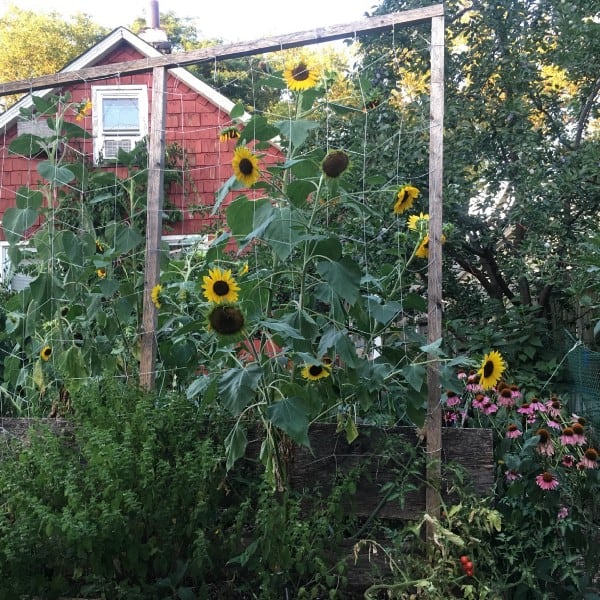
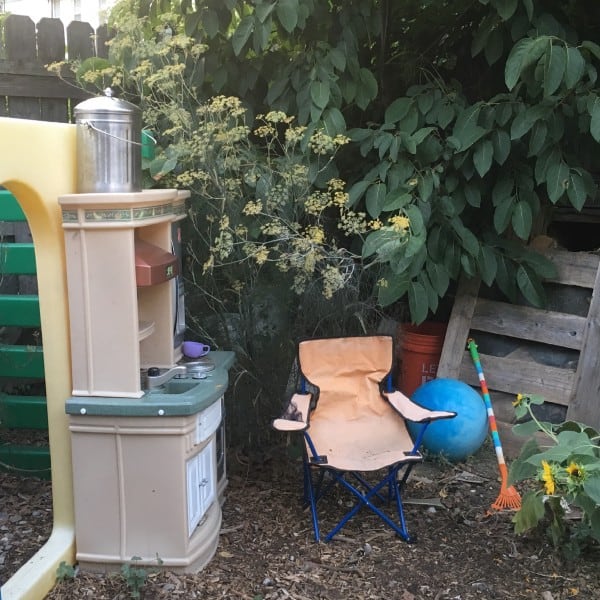
WHY SELF-SEEDING
There are so many reasons to cultivate self-seeding varieties of flowers, herbs and vegetables in the garden. In addition to getting to know the nature of the plant in its fullest expression, you can save tremendous amount of time by working with nature, as opposed to against it. Perhaps I am a lazy gardener, but this is one of my top reasons for cultivating self-seeding varieties. I also enjoy the surprise, and play of chance; as what emerges is a dynamic process outside of my control. Planning and maintenance are interlinked, and a cultivator of self-seeding varieties works with a design of the garden that is more free form allowing for plants to move around the garden at their own volition, as opposed to expecting plants to stay where we put them. As authors Jonas Reif, Christian Kress, and Hank Gerritsen write in their book Cultivating Chaos: How to Enrich Landscapes with Self-Seeding Plants1, “seeding is a vital way in which plant communities thrive and survive … a way of the garden becoming an ecological system.”
Many people refer to self-seeded plants as “volunteers,” and that is because the self-seeding plants emerged because they have something to offer and the conditions were right for them to offer it. Take the self-seeding dandelion. Dandelions growing in a vacant lot with hard, compacted soil demonstrate one of the highest benefits of “volunteers,” because they can provide a direct ecological function and service. The strong taproots of dandelions work hard to break up the compacted soil, draw water and minerals from soil sublayers, and work to restore and regenerate the land upon which it is growing. Self-seeding dandelions also provide a hardy and nutritious, quick-turn-around pollen source for pollinators in an area of land where many other plant ecologies have not yet been established. In this way, I see self-seeding “volunteers” as offering to us some form of restoration, and renewal at a higher level of knowing than we might see at initial face value.
Self-seeding “volunteer” plants typically beat me out to the garden to plant seeds in the ground. In this way, “volunteers” save garden-farmers time by initiating the growing cycle when the conditions are right, as opposed to having to wait till the garden-farmer can get around to planting them. The self-seeding seed has an intelligence that waits for just the right conditions- just the right soil temperature, moisture, nutrients, and get the growing started. It never ceases to amaze me how borage is already a few inches high before I set out sowing in the Spring!
Self-seeding varieties that have early germination periods, and therefore an early on-set of flowering, can be a crucial pollen and nectar source for beneficial insects. The benefit of food and habitat for pollinators and birds continues throughout the life cycle, as many seeds left on the plants become forage for garden friends. Food and habitat for beneficial insects is a primary way in which self-seeding plants transform the garden-farm into an ecological system, and works with nature so that the garden-farm can create resilient ecological relationships.
Cultivating self-seeding is in direct opposition to the segregated model of agriculture which imports its seed, sows it when the farmer is ready rather than when the seed is ready to grow, harvests the plant for its crop, and then clears the field before the plant can set seed, and repeats. In permaculture, a key principle is “integrate, not segregate” and cultivating self-seeding into the garden integrates the sowing, harvesting, designing and planning, as opposed to segregating those acts into isolated moments of human intervention.
Which brings me to a primary benefit of self-seeding varieties, and that is seeds! As seeds develop on a plant, they are adapting to the specific microclimate of your garden, and will produce more resilient off-spring for the next year. Barbara Pleasant in her article “Self-Seeding Crops You’ll Never Need to Replant”3 says “one of the characteristics of a truly sustainable garden is that it produces at least some of its own seed.” By cultivating self-seeding in the garden, you are allowing for your plants to produce more resilient future generations, as well as, producing more seeds in general. When I allow my greens to go to seed after I have harvested them, I end up with exponentially more green seeds, and in turn more potential plants than I started with. Not only can the garden-farmer use these seeds in the garden, but also the wildlife, as mentioned above. While some farmers may view letting plants going to seed to be a waste, the permaculture garden-farmer sees the myriad of benefits to letting a plant live out its full life cycle, encouraging niches to the overall benefit of the ecosystem.
Finally, the cultivated chaos of self-seeding is extremely beautiful and life-affirming. While the garden-farmer plays a role in creating the garden plan, as a self-seeding cultivator, the interaction is primarily centered on observing Nature’s beautiful design layout, without constant intervention, and making choices to encourage what you find beautiful with the goal of encouraging more beauty. Could that be more life-affirming?
HOW SELF-SEEDING WORKS
The practice of cultivating self-seeding in the garden begins with observing a plant’s full life cycle of birth, death, and decay as it transitions from seed to germination to leaves to fruit to seed to dropping its seed, to wilting, and the forthcoming birth of the next generation. This observation process is a constant reminder, and a vital way to tune into the cycles of Nature.
The more you become aware of the plant’s life cycle, you also start to notice its habit and shape. Does it send out runners, form a mat, sprawl, clump or climb? It is possible to do some background research2. into the habit and form of the self-seeders of interest, but what is most informative is the hyper-localized observation process of watching the growing patterns of self-seeding plants on the land where you are. Whatever you learn about growing you are learning about growing where you are. This is true because of microclimates, and the fact that each piece of land has slightly different soil, wind, water, and sun exposure. So what might thrive in one place, doesn’t in another, and visa versa. The best bet of someone who wants to cultivate self-seeding in the garden is to dive right into it. One encouraging thing about the practice- there’s no such thing as failing! Whatever grows grows, and lessons can be learned!
There are different elements in self-seeding plant communities of which are worth paying attention that will support the cultivation of a desired design outcome. For example, what is the population density of the “volunteers” like: is it thick, sparse, or sporadic? How quickly after germinating do they set seed (note: many varieties will set seed quicker when the temperature rises, or they are grown in very close proximity to other seeds)? What is the dispersal pattern of the seeds (do the seeds drop straight to the ground, are they moved by animals or the wind?)?
Having a sense of how specific self-seeding plants grow in your garden allows you to make more informed decisions when intervening. Intervention in the self-seeding garden-farm including select weeding and thinning plants you don’t want to make more space for those you do, and supporting the spreading of plant communities either by dropping the seeds yourself in weeded soil. If you are cultivating self-seeding flowers versus self-seeding greens, you may have different approaches. For example, with self-seeding greens I may start by seeding them heavy like a carpet in a bed in the Spring. After harvesting baby greens for a few yields I will allow them to go to seed (The stress from space competition increases the speed at which most greens will go to seed.). By end of summer, I will have another round of greens sprouting up with little to no work. On the other hand, if I was cultivating self-seeding flowers like calendula or borage, I may thin or transplant “volunteers” to their suggested growing space to allow each plant to reach their maximum growing expression. It is really up to the garden-farmer as to what is your highest priority: is it leaves, greens, seed, color, or something else. With those design goals in mind, intervention is simply a curated process.
It is important to understand that there are self-seeding annuals, self-seeding biennials, and self-seeding perennials. What this means is that how long the individual plant lives depends on its life cycle. For example, a self-seeding annual will grow its full life out, flower and set-seed in one year, and that’s it; that exact parent plant will not grow back the following year. So a self-seeding annual has brand new plants that come up every year. The general growing location of that plant variety may be in a similar location, but they are new plants. Self-seeding biennial varieties take two years to reach their full maturity and set seed. Depending on what you want to use the plant for, self-seeding biennials may require a little more patience with one year not being as productive as others. Finally, self-seeding perennials are plants that will continue to grow every year, going through their full flowering & seed cycle every year, and also set seeds for new plants to grow. Self-seeding perennials may require more thinning or transplanting in the Spring, but also not necessarily. Different plants grow at different rates. Also, some plants be a perennial, but in colder climates they are treated as an annual. It helps to understand if they are self-seeding annuals, biennials or perennials, as each one requires slightly different care.
Finally, the only way that self-seeding works is if you let plants live their full life cycle all the way through the wilting. While many gardeners feel it is a necessity to “clean up” the garden at the end of the season, leaving many plants standing in the garden-farm long after they set fruit can be the most important moment when self-seeding happens. Again, this is why it is so important to understand how the self-seeding plants you want to encourage seed themselves. For example, I always leave the sunflower stalks standing in the garden through the snowy months. Typically the seeds are gone by late Fall, but I leave it to the birds to eat and distribute the seeds for next year’s sunflower crop. Leaving sunflowers to stand in their wilted state supports their self-seeding.
WHERE TO START
Below are a few of my favorite edible and medicinal self-seeding varieties, with a little about how they can be used in the various parts of their cycle.
1. Herbs
There are so many herbs that will happily self-seed in your garden-farm. Calendula, chamomile, chives, fennel, borage, oregano, basil, cilantro, dill, parsley, and horseradish to name a few. Some are self-seeding annuals, other self-seeding perennials, and it is useful to know the difference. Either way, herbs are often times the big heavy hitters for attracting and supporting pollinators. Some self-seeding herbs is a must in any garden-farm.
2. Sunflowers
Perhaps one of my favorite, because they seem so happy to sow themselves. With edible seeds for humans and birds alike, immense beauty, cutting flowers, healthy oil producing potential, edible baby sprouts, and consistent food for beneficial insects, sunflowers can’t be beat!
3. Potatoes
Once you start growing potatoes, it can be hard to stop growing them, unless you find every single little potato that was growing in that soil. Forgotten potatoes are one of the best ways to start next year’s crop early. It is important to watch for blight, and not let any potatoes stay in the ground if they show any signs. Also, in order to get optimal growth of each plant, I occasionaly will transplant them in early Spring to give them a little more space, and get their growing more aligned. This great source of Vitamin C is one of my favorite!
4. Tomatoes
Unless you keep an immaculately clean garden, and pick up every single fallen vegetable and weed, you probably have encountered the “volunteer” tomato. One thing that makes for an interesting self-seeding tomato plant is that it already has done the work for you of saving some its most viable seed from the year before; so in theory, your self-seeding tomato is going to be produce some of your most resilient varieties for your particular climate. Another note about self-seeding tomatoes is that since self-seeding borage is such a great companion plant with tomatoes, the two plants can continue to re-seed themselves in partnership.
5. Greens
There are so many tasty and nutritious greens that are self-seeding. Arugula, chard, collards, kale, lettuce, mustards, spinach, and sorrel are just a few of the awesome options of self-seeding greens. I like to add self-seeding radish and turnip into my bed of baby greens as well. Seeding a bed early in the Spring, taking a few harvests before letting them go to seed, will provide a fresh bed of baby greens come late Summer/Fall. And depending on how densely you seed the initial bunch, you may be able to eat some of the spicy flower heads. For the ones that set flower, you will see many beneficial insects coming to share in a harvest while you admire and wait for the next crop.
6. Squash
Anyone with a compost pile who has put the remains of a squash in it have probably experienced the awesome self-seeding potential of the squash. I have seen many a compost pile that just leave the squash plant growing right out of the pile all season. I have also experienced building a lasagna bed using some 80% finished compost where squash came up in the beds. I’ve left it’s sprawling vines as a ground cover to keep out the weeds till the other things I’ve planted get more established and able to shade out the weeds. I’ve also eaten self-seeding squash. The trick about self-seeding squash is that the fruit that grows very well may be a hybrid of different squash if their parent plant was grown within a close proximity to a different variety of squash- causing for cross-pollination. Check out seed-saving distance requirements to get a full-bred variety so that you can plan for how to best space and cultivate your self-seeding squash patch.
7. Wild Edibles
And where would we be without the wild ones? The wild self-seeding plants are some of my favorite because they are so incredibly informative about the needs of the soil and what the next stage of ecological succession looks like. Wild edibles are often medicinal or provide high nutrient levels. Good examples of self-seeding wild edibles that you may consider cultivating in your garden-farm are dandelion, burdock, wild lettuce, lambs quarter, purslane, and plantain to name a few.
The above list is just a selection of self-seeding possibilities and by no means exhaustive. There are so many more flowers, vegetables and herbs that will make a happy home in your garden-farm if you let them. Once you get started you can experiment with more and more. Nature is abundant, and life wants to live! Growing self-seeding varieties will keep your garden going long after you are sowing, and with a little cultivation and attention, it can be one of the most resilient and productive gardens possible. Happy self-seeding!
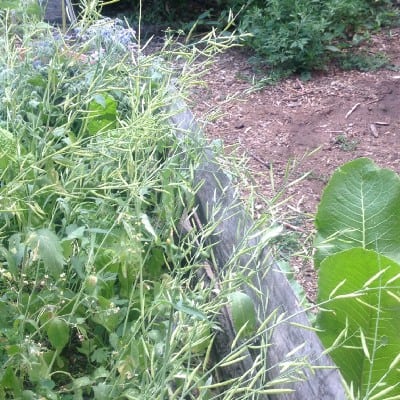
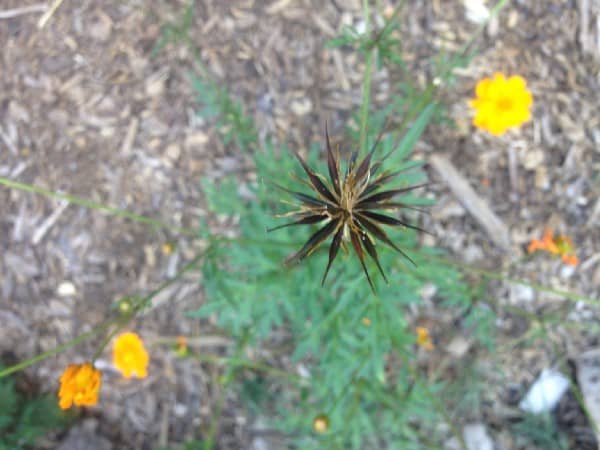
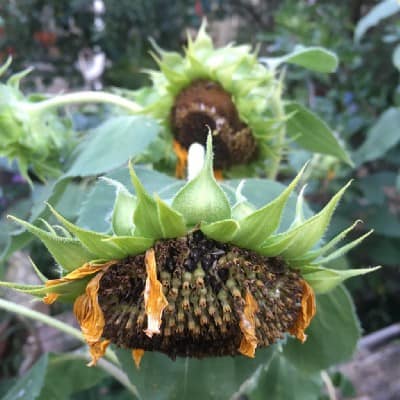
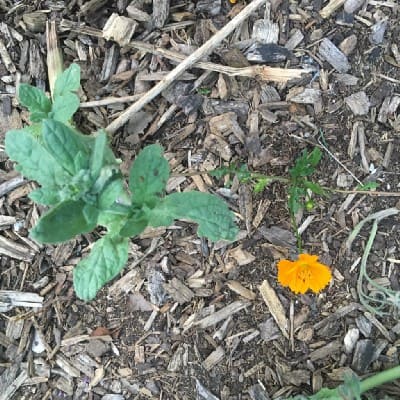
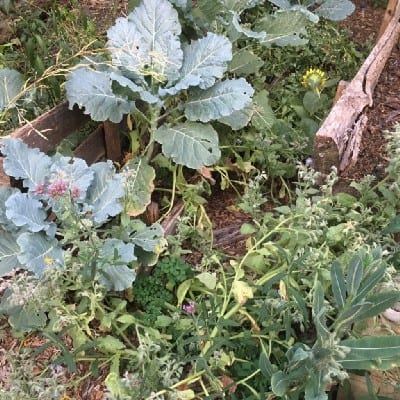
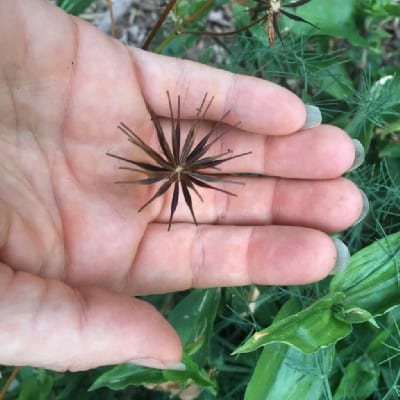
REFERENCES
1. Reif, Jonas, Christian Kress., and Hank Gerritsen Cultivating Chaos: How to Enrich Landscapes with Self-Seeding Plants. Timber Press. 2015.
2. Dave Jacke and Eric Toensmeier’s book, Edible Forest Gardens, Volume 2: Ecological Design and Practice for Temperate Climate Permaculture. 2005 is a great resource for gaining additional insights into plant’s ecological behavior, and consider how best to cultivate their nature. See the “Architecture” (Appendix 1) and “Form & Habit” (Appendix 3) sections of the tables included for more insight on this matter.
3. Pleasant, Barbara. “Self-seeding Crops You’ll Never Need to Replant.” Mother Earth News, August/September 2010.

